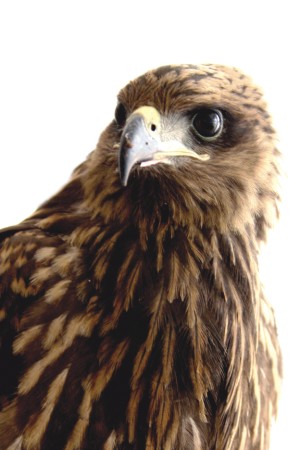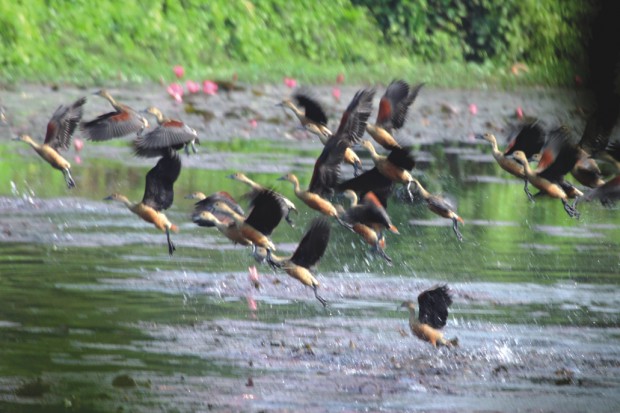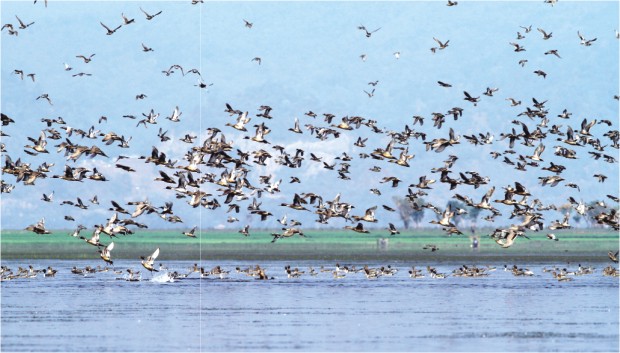| Home - Back Issues - The Team - Contact Us |
 |
| Volume 10 |Issue 18 | May 13, 2011 | |
|
|
Wild Life World Migratory Bird Day 2011 Land Use Changes from a Bird's-eye View Sourav Mahmud
In 2005, the African-Eurasian Migratory Waterbird Agreement (UNEP/AEWA) , a United Nations Environment Programme (UNEP) administered environmental treaty - initiated the Migratory Waterbird Days (MWD) which were held in Africa, Europe and parts of Asia. As this event was well received in the African-Eurasian region, the idea came to broaden the scope into a commemorative day which celebrates the phenomenon of migration and all migrating birds, including waterbirds on a global scale. Originally, the idea of designating a day for migratory birds emerged in the United States in 1993, when the US fish and Wildlife Service, the Smith Migratory Bird Center and the Cornell Laboratory of Ornithology initiated celebration of the 'International Migratory Bird Day' (IMBD), which encourages bird festivals and education programmes across the United States and other parts of the Americas. Although this day continues to be successfully celebrated in the western hemisphere, something similar was missing in the rest of the world. Since then, World Migratory Bird Day (WMBD) has been celebrated in an increasing number of countries and has steadily grown in popularity each year. From the very beginning World Migratory Bird Day has been a tremendous success worldwide. Each year since 2006, the total number of registered WMBD events has steadily increased along with the number of countries in which WMBD celebrations have taken place. In 2010 alone, a total of 90 registered events took place in over 40 different countries - every single one is unique in its own way and as diverse and creative as the people and organisations involved. WMBD activities on this day take place in many different places, both indoors and outdoors; schools, parks, town halls, education centres and nature reserves are all places where events were hosted in the past. These can vary from bird watching tours and educational workshops to dramas, festivals, exhibitions, painting competitions and other awareness raising activities. Bangladesh is a land of a good number of fascinating migratory birds. There are 650 species of birds in Bangladesh some of which are already extinct or extirpated in the past two centuries. A total of 176 species of birds are regular migratory species to Bangladesh; 160 of which are winter visitors, 6 are summer visitors and 10 are spring or passenger migratory (Encyclopedia of Flora and Fauna: BIRDS, 2008).
Human intervention, unplanned urbanisation, habitat loss, mono culture, poaching, hunting, climate change, deforestation, wetland degradation, industrial pollution, insecticide etc. are the greatest threats to migratory birds because these are linked with migratory bird habitat which consequently causes the declining populations and extinctions of migratory birds. Of all the threats to migratory birds, the “Human Hand” effect or human intervention on the Earth's natural environment is the greatest. The Human Hand, or the way humans change and use the natural world for their needs, is the greatest threat to migratory birds because it directly changes, degrades, fragments or removes the habitats migratory birds need to survive. Deforestation greatly affects migratory birds because it changes or removes entire regions of ecosystems and habitats. From a bird's eye view, the impact of land use on tropical forests is unmistakable. As many migrating birds fly to and from tropical regions each year, they find larger areas of forest have been removed. After birds have flown for weeks and thousands of kilometres across entire continents, their rainforest destinations from the year before can be degraded, severely damaged or cease to exist altogether. The natural forest of Bangladesh dramatically shortened in the past 10 years. The consistent growth of urban networks disrupts the intricate web of habitats that birds need to complete their migrations. These productive habitats provide food, rest and water at intervals that migratory birds can bridge and therefore are able to replenish their energy reserves for their long migrations. However, many urban areas like Dhaka have changed considerably from their original country, and dense regions of urban development have resulted in the loss of too many of these connecting habitats, making migration for birds increasingly difficult. The physical presence of and activities undertaken in urban areas produce light, noise, air and water pollution which make migrations increasingly difficult as well. Noise and light pollution disorient and disrupt migration flights, and polluted air and urban wastewater make the remaining available habitat less productive by damaging local food webs. Physical obstacles such as wind turbines and skyscrapers are also dangerous and collisions with urban structures kill millions of migrating birds a year. Each year, many species of migrating birds spanning entire regions can stop at the same major wetlands. They must depend on very specific areas that they use each year they know to be safe and are productive enough to provide food and water after long flights. Our haor area is a very good place to roosting and feeding ground migratory waterfowl. The loss of even a few wetlands can lead to the decline of many species with far reaching effects. One crucial wetland can affect an entire continental migration corridor, known as a flyway, and the ability of huge proportions of birds in an entire hemisphere from travelling along migration routes. The presence of mineral extraction industries can result in the removal of large regions of migratory bird habitat (sometimes even eradicating entire mountains and lakes); however, the extensive use of water and the creation of waste products can also greatly affect the health of a much larger surrounding area of habitat. Some extraction processes can use and pollute large amounts of limited water supplies from local wetlands, lakes and rivers. Waste water from extraction industries can be extensively contaminated with poisonous metals and chemicals used to isolate minerals. Lower water levels can drastically change wetlands ecosystems and food webs migrating birds need. Waste water from mineral extraction can contain heavy metals and chemicals and contaminate surrounding wetlands and aquifers. These contaminants can greatly reduce the productivity of animal and plant life and affect food webs, damaging the natural environment's ability to support migrating birds by affecting food supplies.
In the past three centuries, world-wide cropland and pasture have expanded six-fold mainly due to exponential human population growth. Large-scale intensive agriculture creates vast regions of featureless landscapes, replacing water sources and diverse food webs with crop monocultures. Intensive agriculture differs from other types because of its magnitude and use of chemicals and pesticides. Intensive agriculture taxes limited water supplies that help sustain natural productive habitats. As water is diverted to agricultural lands, migratory bird wetland habitat can be destroyed. For example, extensive use of water for agriculture along the 2300 km long Colorado River has resulted its delta running almost completely dry much of the year. Pesticides, herbicides and fertilisers are dangerous chemicals that disrupt food webs and enter natural environments through agricultural waste water runoff. They kill many plants and animals and contaminate wetlands and aquifers. Birds can swallow pesticides directly by consuming contaminated food or water, or indirectly by landing in contaminated habitats. Pesticides can also be absorbed through the skin, or inhaled when pesticides are applied aerially. Herbicides kill plants that play important roles in habitats and that birds eat. These plants help create the complexity of habitats that sustains complex food webs. Habitats and food webs make the productive ecosystems that sustain many plant and animal species at once, including migratory birds. Fertilisers disrupt food webs by injecting extremely high amounts of nutrients into natural environments. Algae and bacteria that thrive on these fertilisers grow at very fast rates, using up all the oxygen in water supplies. This can lead to the deaths of other plants and animals and have a dramatic effect on habitats and food webs. Migratory birds are a good indicator of how humans interact with and use the natural environments around them. Migrating birds connect all of the continents and oceans of the world, and protecting these birds, by protecting their habitats can also benefit other plant and animal species. Furthermore, protecting migratory birds and the habitats they need to survive can also help ensure that the natural world will continue to provide for future human generations. Sourav Mahmud, Professional, Ecology Division, CEGIS (Center for environmental and Geographic Information Services)
Copyright
(R) thedailystar.net 2011 |
 F
F
